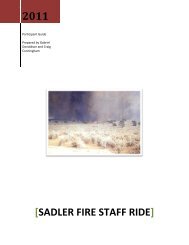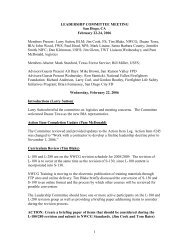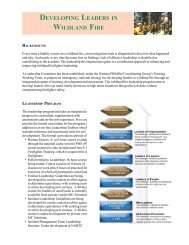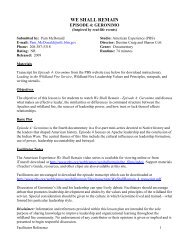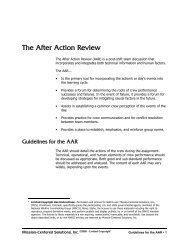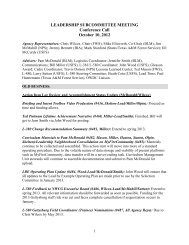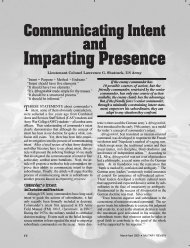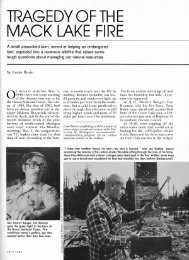example tdgs/stex #2 - Wildland Fire Leadership Development
example tdgs/stex #2 - Wildland Fire Leadership Development
example tdgs/stex #2 - Wildland Fire Leadership Development
You also want an ePaper? Increase the reach of your titles
YUMPU automatically turns print PDFs into web optimized ePapers that Google loves.
• Choose Player(s) to Present Solutions: Generally, it is better to select a player to<br />
present solutions than to ask for volunteers. Players should not feel like they can<br />
escape the challenge by simply not volunteering. They should feel like they have<br />
as much chance as anybody else does, since this adds to the stress. The facilitator<br />
should attempt to identify players who try to make excuses or actively try to avoid<br />
presenting a solution and ensure their involvement.<br />
3. Let the Games Begin<br />
• Enforce the “Time Limit” Rule: Time compression creates stress.<br />
• Enforce the “Decisions as Instructions” Rule: Assign other players roles as the<br />
recipients of instructions or communications. Players must simulate giving their<br />
instructions either face-to-face or over the radio. Do not allow “I would have done<br />
this…” statements. Encourage the use of the briefing checklist format found in the<br />
IRPG as a guide when communicating their decisions and giving instructions to<br />
new incoming resources.<br />
4. Conduct an AAR<br />
• Question the Thought Process: One of the most important things the facilitator<br />
does is probe the player's thought process in order to get the player to explain their<br />
rationale. Useful questions include:<br />
o "Describe your overall assessment of the situation"<br />
o "Why did you do this or that"<br />
o "What would you have done if..."<br />
o "What were your assumptions about the situation"<br />
o "What is your biggest concern about your plan"<br />
o “What information was critical to you and why”<br />
• Draw-out Lessons: Finally, the facilitator should summarize the lessons that the<br />
session has illustrated. Use the AAR format found in the IRPG to increase player<br />
familiarity with that reference.<br />
5. The Traits of a Good Facilitator<br />
• Enthusiastic Delivery: This is perhaps the most important trait. If the facilitator<br />
is enthusiastic about the subject, enjoys TDGS, and believes in the value of TDGS<br />
as a learning tool, their feelings will be contagious to the players.<br />
• Prepared and Tactically Knowledgeable: In order to lead the discussion and<br />
provide a useful review, the facilitator must know the subject matter. This skill is<br />
especially important since there is no single correct “textbook” solution to these<br />
14



